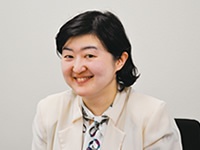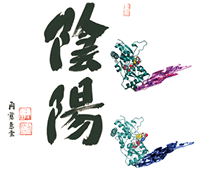Research highlights
Bio-nanomachines: Nano-size biological machinery for manipulating physiological function
Rene Descartes proposed that all physiological system could be recognized by mechanistic principles. We recognize intact biostructure ionotropic glutamate receptors (iGluR6) as machinery, which is normally expressed in synaptic neural processes in mammalian brain. To control any neural activity remotely and reversibly, photoswitchable nano-machine—LiGluR & Yin/yang—were developed based on iGluR6 and operated using photoiosomerizable new chemicals, MAG.
Rika Numano at Electronics-Inspired Interdisciplinary Research Institute (EIIRIS), Toyohashi Tech, in collaboration with Ehud Isacoff's group at UC Berkeley have been investigating the dynamics of ion channels and efficiently manipulating them for optical control of neural activity.
Here, Numano and colleagues photo-switched iGluR6 using three kinds of MAG0,1,2, which dangle 2R,4R-allyi glutamate (G) from a linker containing the photoisomerizable azobenzene (A) that is attached to introduced cysteines via maleimide (M). The MAGs were examined at some cysteine mutated positions around the ligand binding domain "clamshell" from geometry.
In neural cells with LigluR (with L439C mutation), action potentials are optimally evoked and extinguished by UV and visible light, respectively. Yin/yang (G486C) optical control makes it possible for a single wavelength of light to elicit action potentials in one set of neurons, while de-exciting a second set of neurons in the same preparation.
The ability to generate opposite responses with short MAG0 and two versions of a target channel, which can be expressed in different cell types, paves the way for engineering opponency in neurons that mediate opposing functions.
The researchers could control notable neural circuit activity to regulate physiology from a mechanistic view.
- Reference:
- Rika Numano*, Stephanie Szobota, Albert Y. Lau, Pau Gorostiza, Matthew Volgraf, Benoit Roux, Dirk Trauner and Ehud Y. Isacoff
- PNAS 106 6814 (2009)
- DOI: 10.1073_pnas.0811899106
- *Rika Numano is now at The Electronics-Inspired Interdisciplinary Research Institute (EIIRIS), Toyohashi University of Technology, Aichi, Japan.
- Further information
- The Electronics-Inspired Interdisciplinary Research Institute (EIIRIS), Toyohashi University of Technology: http://www.eiiris.tut.ac.jp/
- Departments of Molecular and Cell Biology, University of California, Berkeley: Department website: http://mcb.berkeley.edu/

Dr Numano

Fig.1:Right :Yin/yang photoswitched channel controls neural activity by UV/VIS irradiation with photoisomers MAG. Center:Yin/yang calligraphy is produced by Adachi-rohshi (Zen priest in Kamakura JAPAN 1932- ). Enkaku Jiun (pen name) is signed with seal in left side. This calligraphy work is arranged by permission of Adachi-rohshi.


